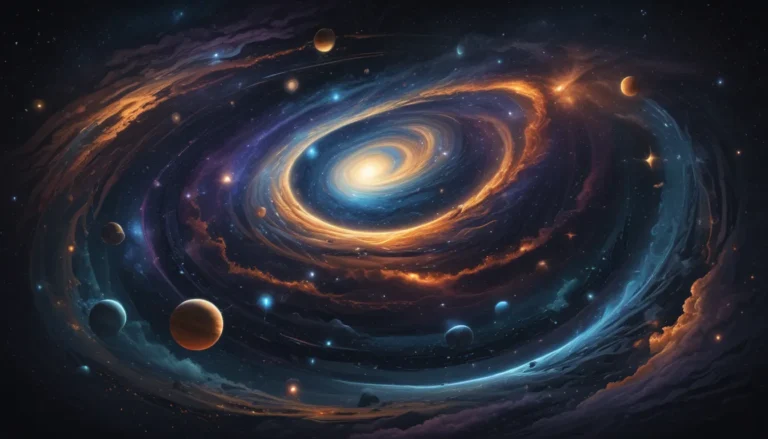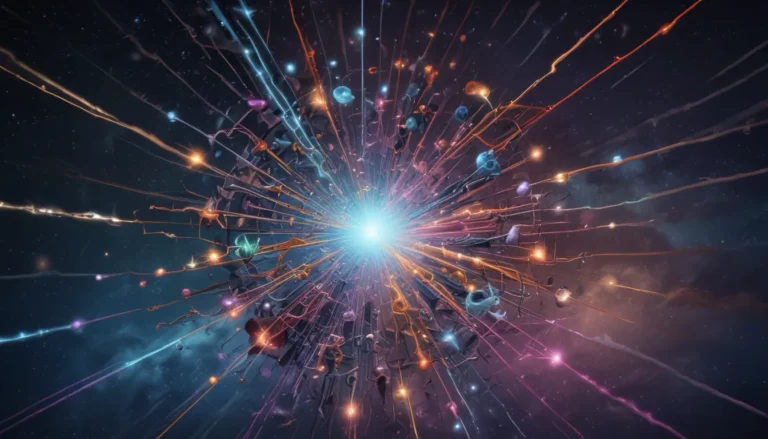The pictures we use in our articles might not show exactly what the words say. We choose these pictures to make you interested in reading more. The pictures work together with the words but don’t take their place. The words still tell you the important facts.
Cosmic background radiation, also known as the afterglow of the Big Bang, is a captivating phenomenon that has intrigued scientists and astronomers for decades. This pervasive radiation fills the entire universe, providing crucial clues about the origins and evolution of the cosmos. In this article, we will delve into the fascinating world of cosmic background radiation and uncover 15 mind-blowing facts that will significantly expand your understanding of our universe. From its accidental discovery to its role in verifying the Big Bang theory, these facts will shed light on the secrets of the cosmic microwave background and its profound implications for our understanding of the universe.
The Cosmic Origin Story: Oldest Light in the Universe
Cosmic background radiation, also known as CMB, is the oldest light in the universe, dating back to just 380,000 years after the Big Bang. This faint glow permeates the entire observable universe, offering a unique glimpse into our cosmic origins and supporting the Big Bang Theory.
A Serendipitous Discovery: Unveiling Cosmic Background Radiation
Cosmic background radiation was discovered accidentally in 1965 by Arno Penzias and Robert Wilson while working at Bell Labs. They detected a persistent noise that was independent of their antenna's direction and distance from Earth, which turned out to be the afterglow of the Big Bang.
A Universal Chill: Uniform Temperature of Cosmic Background Radiation
One of the most remarkable aspects of cosmic background radiation is its uniform temperature across the sky. Regardless of where we point our telescopes, the temperature remains nearly constant at approximately 2.7 Kelvin (-270.45 degrees Celsius).
Cosmic Maestro’s Overture: The Symphony of Sound
Cosmic background radiation not only possesses a temperature but also emits a faint hum across a wide range of frequencies. This cosmic symphony of sound provides further evidence for the Big Bang and the subsequent expansion of the universe.
Insights into Galactic Evolution: Mapping the Anisotropies
Precise measurements of cosmic background radiation have enabled scientists to create detailed maps of its subtle temperature variations, known as anisotropies. These maps play a crucial role in understanding the structure and composition of the early universe.
From Hypothesis to Reality: George Gamow’s Prediction
In the 1940s, physicist George Gamow hypothesized the existence of cosmic background radiation as an afterglow of the Big Bang. His prediction was largely ignored until its accidental discovery by Penzias and Wilson, solidifying the foundation of the Big Bang Theory.
Shedding Light on Dark Matter: Unraveling the Mysteries
Studying the patterns of cosmic background radiation can provide valuable insights into the distribution and nature of dark matter, a significant yet elusive component of the universe. By analyzing these patterns, scientists gain a deeper understanding of the cosmic landscape.
From Darkness to Light: Cosmic Background Radiation Intensity
Despite filling the entire universe, cosmic background radiation is incredibly faint, approximately 70,000 times weaker than sunlight. This faint glow poses a significant challenge for detection without specialized instruments.
The Cosmic Time Capsule: Insights into the Early Universe
Cosmic background radiation acts as a cosmic time capsule, preserving information about the universe's earliest moments. By analyzing its properties, scientists can refine our understanding of the cosmos and unlock new mysteries waiting to be unraveled.
Through the Eyes of COBE: The Satellite Mission
The Cosmic Background Explorer (COBE) satellite mission, launched in 1989, made precise measurements of cosmic background radiation. This mission provided vital data confirming the theory of an expanding universe and earned John Mather and George Smoot the Nobel Prize in Physics in 2006.
Cracking the Code: Hot and Cold Spots
Through detailed observations, scientists have identified both hot and cold spots in cosmic background radiation. These temperature variations offer valuable clues about the early fluctuations in the density of matter, leading to the formation of galaxies and cosmic structures.
Infant Universe Chronicles: Direct Observations
Cosmic background radiation enables direct observations of the infancy of our universe, allowing us to study the physical processes that occurred during its early stages. These observations shed light on the fundamental laws governing the universe's evolution.
Unveiling the Secrets: FAQs on Cosmic Background Radiation
- What is cosmic background radiation? Cosmic background radiation is the faint electromagnetic radiation that fills the entire universe, serving as the afterglow of the Big Bang, which occurred approximately 13.8 billion years ago.
- How was cosmic background radiation discovered? Cosmic background radiation was discovered accidentally in 1964 by Arno Penzias and Robert Wilson while studying microwave signals with a radio antenna.
- What does cosmic background radiation tell us about the early universe? Cosmic background radiation provides evidence for the Big Bang theory, indicating that the universe was once in a hot, dense state and has been expanding and cooling ever since.
- How does cosmic background radiation help us understand the formation of galaxies? Cosmic background radiation reveals density variations in the matter of the universe that eventually led to the formation of galaxy clusters and galaxies.
- Can we detect variations in cosmic background radiation? Yes, variations in cosmic background radiation can be detected, providing insights into the evolution and structure of the universe.
Embracing Cosmic Curiosity: Conclusion
In conclusion, cosmic background radiation is a fascinating phenomenon that offers valuable insights into the early universe. These mind-blowing facts highlight its significance in understanding the Big Bang theory, the formation of galaxies, and the overall structure of the universe. From its accidental discovery to its confirmation as evidence for the Big Bang, cosmic background radiation has revolutionized our understanding of the cosmos. As technology advances, our knowledge of cosmic background radiation will continue to expand, unraveling more mysteries of the universe and pushing the boundaries of our cosmic understanding.
As we explore the wonders of cosmic background radiation, let your curiosity guide you through the complexities of the universe. Delve deeper into the astrophysical realm, uncovering the secrets of the cosmic microwave background spectrum, and journey back to the beginning with astounding facts about the Big Bang. The universe beckons with endless possibilities, inviting us to explore, learn, and marvel at its magnificent mysteries.






